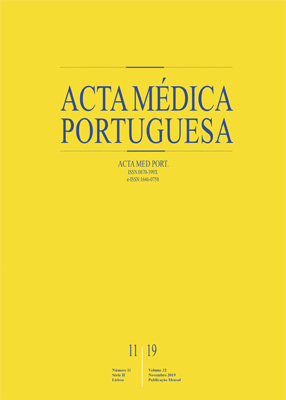Long-term Neuropsychiatric and Neuropsychological Sequelae of Endovascularly Treated Aneurysmal Subarachnoid Hemorrhage
DOI:
https://doi.org/10.20344/amp.10894Keywords:
Activities of Daily Living, Endovascular Procedures, Mood Disorders, Subarachnoid Cognitive Dysfunction, Subarachnoid Hemorrhage/complicationsAbstract
Introduction: There is limited evidence regarding long-term outcomes of aneurysmal subarachnoid hemorrhage survivors. Most follow-up programs are relatively short and focused on physical functions. Endovascular aneurysmal embolization enables recovery of normal vascular architecture. However, there is growing evidence that neuropsychological and behavior sequelae can significantly impact the lives of these patients, even when treatment is successful. In this study, we reviewed cognition, psychiatric and neuropsychological symptoms, global functionality, and health-related quality of life 10 to 12 years after an aneurysmal subarachnoid hemorrhage.
Material and Methods: A cross-sectional observational study was carried out in a university hospital. All cases of aneurysmal subarachnoid hemorrhage admitted between January 2004 and December 2006 and endovascularly treated were reviewed. Participants underwent a neuropsychological evaluation and a clinical interview with a psychiatrist.
Results: Fourteen patients participated in the study. Almost 70% (n = 10) showed cognitive impairment; in more than 40% (n = 6) of the subjects, significant symptoms of anxiety were identified, and 35% (n = 5) were classified as having clinical depression. Relevant posttraumatic symptoms were reported by more than 70% (n = 10) of patients, and almost 30% (n = 4) showed other moderate neuropsychiatric symptoms. Overall, health-related quality of life was impaired, and personality changes were frequently reported by the participants and their relatives.
Discussion: A significant prevalence of ongoing deficits in high-level functioning and reduced health-related quality of life were observed in a sample of young and professionally active individuals that were successfully treated and discharged from follow-up consultations.
Conclusion: There is a need for better follow-up strategies, targeting more subtle deficits and psychological symptoms after aneurysmal subarachnoid hemorrhage.
Downloads
Downloads
Published
How to Cite
Issue
Section
License
All the articles published in the AMP are open access and comply with the requirements of funding agencies or academic institutions. The AMP is governed by the terms of the Creative Commons ‘Attribution – Non-Commercial Use - (CC-BY-NC)’ license, regarding the use by third parties.
It is the author’s responsibility to obtain approval for the reproduction of figures, tables, etc. from other publications.
Upon acceptance of an article for publication, the authors will be asked to complete the ICMJE “Copyright Liability and Copyright Sharing Statement “(http://www.actamedicaportuguesa.com/info/AMP-NormasPublicacao.pdf) and the “Declaration of Potential Conflicts of Interest” (http:// www.icmje.org/conflicts-of-interest). An e-mail will be sent to the corresponding author to acknowledge receipt of the manuscript.
After publication, the authors are authorised to make their articles available in repositories of their institutions of origin, as long as they always mention where they were published and according to the Creative Commons license.









